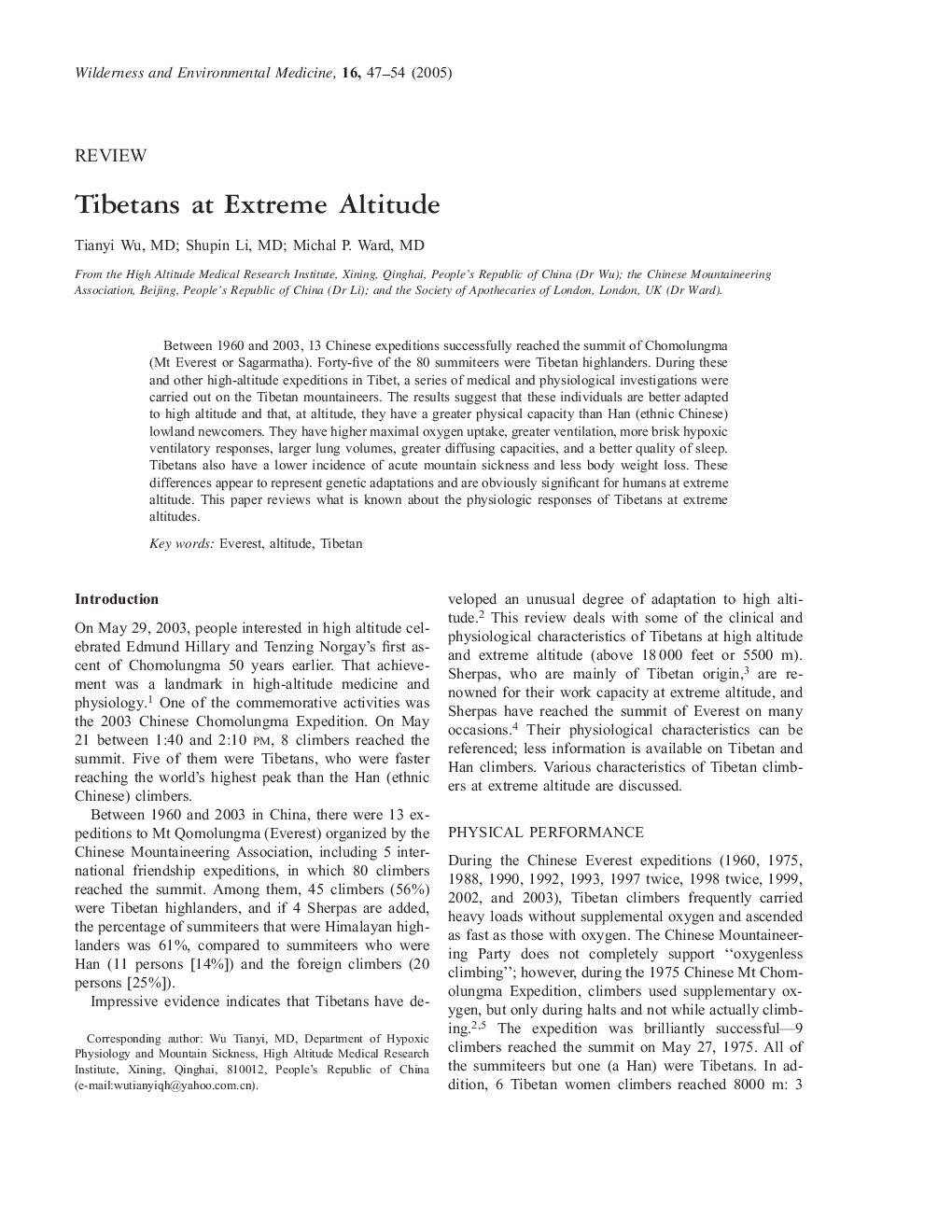| Article ID | Journal | Published Year | Pages | File Type |
|---|---|---|---|---|
| 9045796 | Wilderness & Environmental Medicine | 2005 | 8 Pages |
Abstract
Between 1960 and 2003, 13 Chinese expeditions successfully reached the summit of Chomolungma (Mt Everest or Sagarmatha). Forty-five of the 80 summiteers were Tibetan highlanders. During these and other high-altitude expeditions in Tibet, a series of medical and physiological investigations were carried out on the Tibetan mountaineers. The results suggest that these individuals are better adapted to high altitude and that, at altitude, they have a greater physical capacity than Han (ethnic Chinese) lowland newcomers. They have higher maximal oxygen uptake, greater ventilation, more brisk hypoxic ventilatory responses, larger lung volumes, greater diffusing capacities, and a better quality of sleep. Tibetans also have a lower incidence of acute mountain sickness and less body weight loss. These differences appear to represent genetic adaptations and are obviously significant for humans at extreme altitude. This paper reviews what is known about the physiologic responses of Tibetans at extreme altitudes.
Related Topics
Health Sciences
Medicine and Dentistry
Emergency Medicine
Authors
Tianyi MD, Shupin MD, Michal P. MD,
